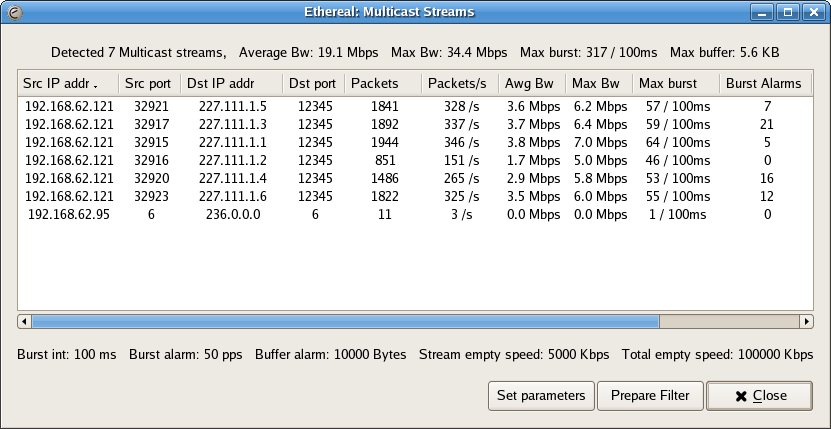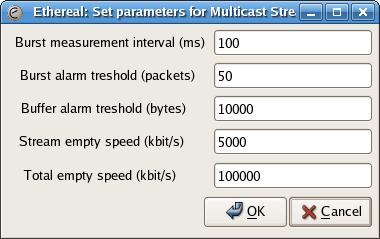Multicast Streams
To access the Multicast streams analysis use the menu entry "Statistics->Multicast Streams".
To try out this dialog, a capture file containing MPEG2 Multicast streams can be found at SampleCaptures/video_multicast.cap.gz
What you can do with Multicast stream analysis?
- Detect multicast streams
- Measure how big the bursts inside video streams are (sliding window algorithm)
- Measure how big the output buffer should be at a certain output speed (Leaky bucket algorithm)
Multicast streams dialog window
Procedure
- the TAP system waits for UDP packets
- every UDP packet is checked whether destination MAC address starts with "01:00:5E" (ethernet multicast address)
- a new entry is created for every new multicast stream
- based on sliding window algorythm max burst and max bandwidth is calculated
- a counter shows how many times the number of packets in a burst was higher then limit specified
- a leaky bucket algorithm calculates how big the output queue should be that no packet drop will occur
- a counter shows how many times the demanded output queue was bigger then the one available
- also for every stream total number of packets, pps, average BW, max BW are calculated
- the same calculation is done for all multicast streams together
Parameters window
Inside this window dialog it is possible to specify the burst interval, the alarm limits and output speeds
Columns explanation
- Max burst - the highest number of packets inside a sliding window time interval. The time interval can be specified inside the Set parameters window
- Max Bw - same as the above one, only in Mbps instead of pps
- Burst Alarms - how many times the bursts exceeded the limit set inside the Parameters dialog
- Max buffer - how big the output queue should be that no packet will be dropped at specified output speed
- Buff alarms - how many times this was not the case (the required buffer was higher than available one)
Imported from https://wiki.wireshark.org/Multicast_streams on 2020-08-11 23:17:03 UTC


